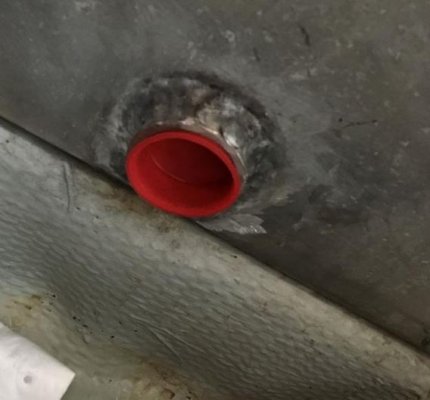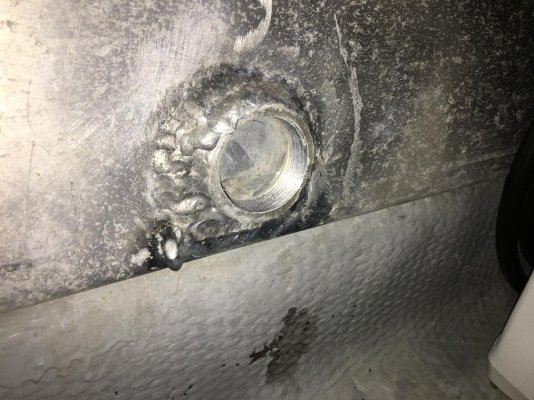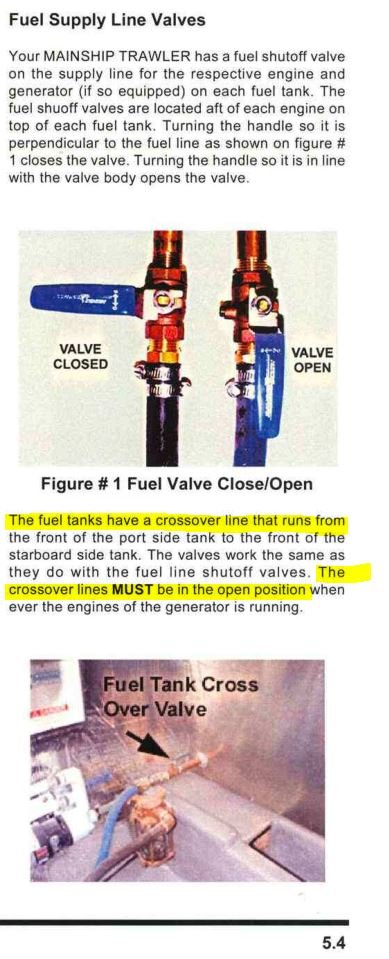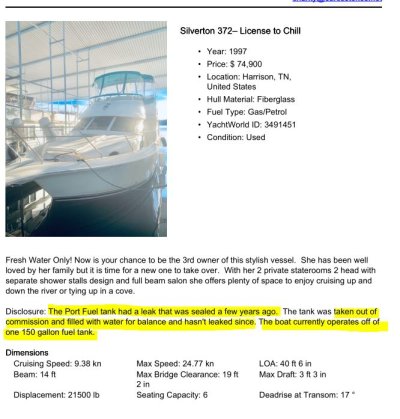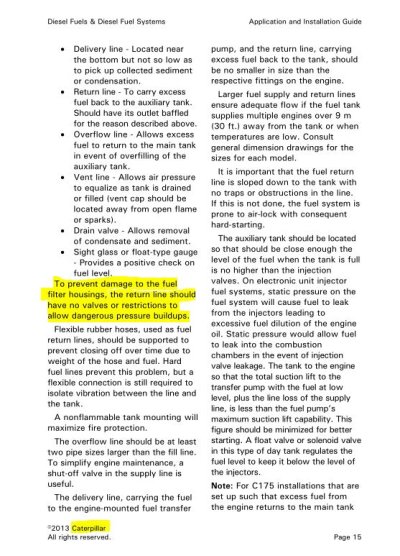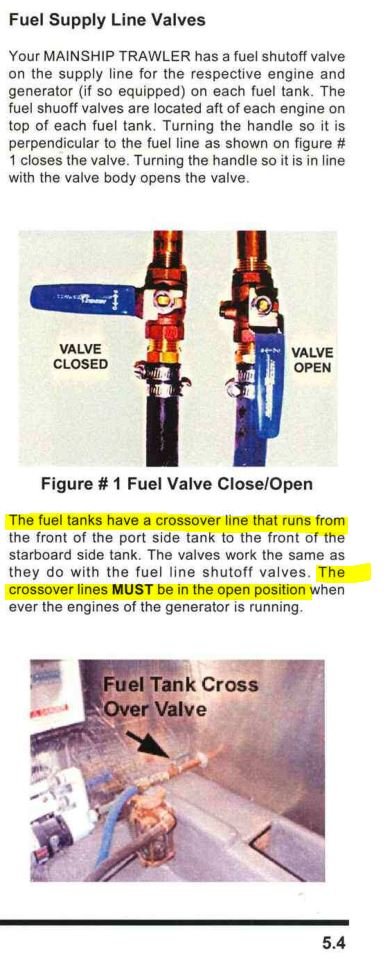Riverguy
Senior Member
- Joined
- Feb 17, 2013
- Messages
- 285
- Location
- USA
- Vessel Name
- Serendipitous
- Vessel Make
- Mainship 390, Bayliner 3258, Bayliner 4788
Really? Naah...you're pulling our legs.
Re: "I have built boats with twin saddle tanks, single engine, no cross over. After the boat is built the supply and return valves are adjusted until tanks are drawn from and returned to evenly, after which the handles are removed and wire tied adjacent to the valve. It can be made to work properly."
No, it can't. But you're kidding right? I hope you are because I want to laugh here and say "O.K. Steve, you had me going..."
This would be a total kludge, and (if you think about what you just said) it is readily apparent that this kludge can only work if the tanks somehow, miraculously remain at the exact same fill level over the years, and the engine is always run at it's max fuel flow rate. Never going to happen.
1) In this design, where does the generator draw from/return to? Do you propose the same kludge for that?
2) In this design, when you need to shut off the fuel valves (functional fuel shutoff valves ARE required by ABYC) -- how do you do that when you have "removed the handles and wire tied them".?
3) Re: "the supply and return valves are adjusted until tanks are drawn from and returned to evenly". Really? Using what measurement tool or method? Using "flow restriction" to balance fuel draw, you'd need to adjust them while pulling the maximum gph draw from the engine, but then, when running slowly at let's say, 1/10th the gph of maximum draw, the whole system would become useless and revert to a simple gravity feed. The restriction presented by any orfice varies exponentially with flow rate. At lower flow rates your valve restrictions will do nothing.
4) On the return side, you are seriously going to place restriction valves in the fuel return lines and adjust them to "balance the flow" among the tanks? What fuel flow rate do you use for this? You do know that (once again) whatever restriction you choose will only work for the specific flow rate you've chosen, right? And of course, if you mess that up (even a little) you are going to destroy an injector pump and/or blow up the return fuel lines and spray fuel all over the bilge. Check with any diesel engine manufacturer on that, and I am pretty sure ABYC won't let you do that either. Incredibly dangerous.
Good one Steve...you had me going.
I have built boats with twin saddle tanks, single engine, no cross over. After the boat is built the supply and return valves are adjusted until tanks are drawn from and returned to evenly, after which the handles are removed and wire tied adjacent to the valve. It can be made to work properly....
Re: "I have built boats with twin saddle tanks, single engine, no cross over. After the boat is built the supply and return valves are adjusted until tanks are drawn from and returned to evenly, after which the handles are removed and wire tied adjacent to the valve. It can be made to work properly."
No, it can't. But you're kidding right? I hope you are because I want to laugh here and say "O.K. Steve, you had me going..."
This would be a total kludge, and (if you think about what you just said) it is readily apparent that this kludge can only work if the tanks somehow, miraculously remain at the exact same fill level over the years, and the engine is always run at it's max fuel flow rate. Never going to happen.
1) In this design, where does the generator draw from/return to? Do you propose the same kludge for that?
2) In this design, when you need to shut off the fuel valves (functional fuel shutoff valves ARE required by ABYC) -- how do you do that when you have "removed the handles and wire tied them".?
3) Re: "the supply and return valves are adjusted until tanks are drawn from and returned to evenly". Really? Using what measurement tool or method? Using "flow restriction" to balance fuel draw, you'd need to adjust them while pulling the maximum gph draw from the engine, but then, when running slowly at let's say, 1/10th the gph of maximum draw, the whole system would become useless and revert to a simple gravity feed. The restriction presented by any orfice varies exponentially with flow rate. At lower flow rates your valve restrictions will do nothing.
4) On the return side, you are seriously going to place restriction valves in the fuel return lines and adjust them to "balance the flow" among the tanks? What fuel flow rate do you use for this? You do know that (once again) whatever restriction you choose will only work for the specific flow rate you've chosen, right? And of course, if you mess that up (even a little) you are going to destroy an injector pump and/or blow up the return fuel lines and spray fuel all over the bilge. Check with any diesel engine manufacturer on that, and I am pretty sure ABYC won't let you do that either. Incredibly dangerous.
Good one Steve...you had me going.

